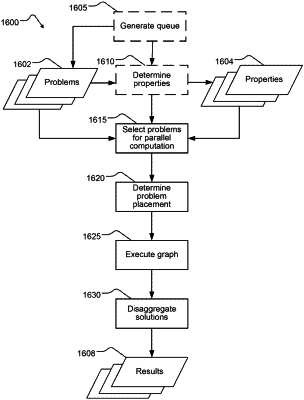| CPC G06N 10/00 (2019.01) | 12 Claims |

|
1. A method of operation in a computational system, the computational system comprising a quantum processor comprising a plurality of qubits and one or more coupling devices arranged to form a working graph for embedding a problem graph, the computational system further comprising at least one non-quantum processor-based device, the method comprising:
receiving a plurality of problems, each problem representable as a problem graph having a number of decision variables;
selecting, from the plurality of problems, a first problem based on one of more properties of the first problem;
selecting, from the plurality of problems, a second problem based on at least one of the one or more properties of the first problem and one or more properties of the second problem;
determining, for each of the first and the second problems, a placement of the problem graph representing the problem in a placement graph;
determining an executable representation of the placement graph together with the placements of the first and the second problems, the representation executable by the quantum processor in one or more executions;
providing the executable representation to the quantum processor for execution;
receiving, from the quantum processor, an output based on at least one execution of the executable representation by the quantum processor; and
generating a first solution to the first problem and a second solution to the second problem by disaggregating representations of the first and the second solutions from the output.
|